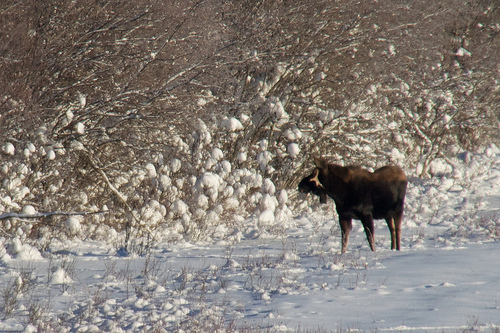
© tuchodi
The idea behind the Paleo diet makes a great deal of sense. For tens of thousands of years, humans have been eating the foods available during the Paleolithic period. Our bodies have adapted to use these foods and easily digest and process them. Our bodies know how to use the nutrients in these foods, and how to dispose of the waste in these foods.
But what is the Paleo diet? What did Paleolithic peoples really eat?
The Paleo diet is generally agreed to consist of foods that were only available during the Paleolithic period, before agriculture and the keeping of domestic animal herds had been developed. All grains, dairy products, all modern processed foods and oils are excluded. Wild meat, fish, roots, shellfish, berries, fruits, eggs, some tree nuts, vegetables, and edible fungi such as mushrooms are included.
Some say that the Paleo diet should be meat-heavy with an emphasis on lean meats. Others say it can be mostly fruits and vegetables. Some say it should be high-fat, and others say it should be low-fat. But what did the Paleolithic peoples really eat?
A true Paleolithic diet was discovered and recorded by Dr. Weston A. Price, the great food researcher. In 1933, Dr. Price visited a native people living in the far north of Canada, far from the sea. These people were eating the same diet their ancestors had, consisting only of foods that were readily available during the Paleolithic period.
These people had no agriculture, and no herds. They were so far north that they were deprived of all fruits and vegetables for most of the year. They were far from the sea, and the rivers were so frozen that there were no fish. In fact, they ate very little other than the wild animals they hunted, often moose.
They ate not only the meat of the animals, but the organs, and the fat,
especially the fat. Meat was always eaten with fat. They also ate bone marrow, chewed on the bones, and used the bones in cooking. The animals they ate were mainly herbivores, grass-eaters, so they were eating grassfed meat and fat, and the organs of grassfed animals. And just about nothing else.
Dr. Price found that these people were in excellent health, strong, happy, and vital. Though the temperature would often be seventy below zero during the long, cold winters, these people had learned how to keep warm and well-fed. The women would give birth quickly and easily, to healthy children who were free of birth defects. They had no dentists, and no cavities. Despite the extreme cold, nobody had arthritis. They did not have heart disease or cancer. They did not have diabetes or any of the chronic diseases so common in the modern world.
Dr. Price wanted to know why they did not get scurvy, a disease caused by the lack of Vitamin C that causes teeth to fall out, and eventually results in death. Dr. Price learned that they got the Vitamin C they needed by eating the adrenal glands and second stomachs of the animals they hunted. Scientific research later confirmed that the adrenal glands of grassfed animals were the richest known source of Vitamin C, containing far more than any fruit or vegetable. These native people knew what part of the animal to eat, so they could get the nutrition they needed.
In fact, they got all their vitamins and minerals from the fat, organs and bones of the animals they hunted.These people were so free from crime that nobody locked their doors, and nothing was ever stolen.
After Dr. Price left these people, he traveled south, and studied the native peoples he met on the way. Many of these people had adopted modern food like jam, sugar, syrup, and bread. The native peoples eating modern foods were riddled with disease, many suffering from crippling arthritis. Tuberculosis, cancer, and tooth decay were very common.
Dr. Price's research described a true Paleolithic diet, and the wonderful health of the people who followed it.
While this is not the only Paleolithic diet, it shows how beneficial a true Paleolithic diet can be.
Reader Comments
to our Newsletter